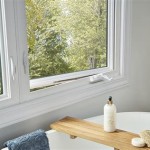Best Caulk Around Bathroom Sink: A Comprehensive Guide
A well-caulked bathroom sink is not only aesthetically pleasing but also crucial for preventing water damage and mold growth. Caulk acts as a sealant, bridging the gap between the sink and the countertop, preventing water from seeping into the underlying structure. Choosing the right caulk and applying it properly is essential for achieving a long-lasting and effective seal. This guide will delve into the best caulk options for bathroom sinks, highlighting their key features and benefits.
Understanding Caulk Types
Caulk is available in various types, each suitable for specific applications. For bathroom sinks, the most common types include:
- Silicone Caulk: Known for its flexibility, waterproof nature, and resistance to mildew, silicone caulk is an excellent choice for bathroom sinks. It forms a durable seal that can withstand repeated exposure to water and moisture.
- Acrylic Caulk: Acrylic caulk is a more affordable option, but it is less durable and water-resistant than silicone caulk. It is suitable for sealing minor gaps and is easier to paint over.
- Polyurethane Caulk: Polyurethane caulk offers strong adhesion and excellent flexibility, making it suitable for sealing larger gaps and areas that require more movement. However, it is not as mildew-resistant as silicone caulk.
- Epoxy Caulk: Epoxy caulk is a high-performance option known for its exceptional durability, water resistance, and resistance to chemicals. It is often used in demanding applications, such as sealing cracks and joints in concrete.
Factors to Consider When Choosing Caulk
When choosing caulk for your bathroom sink, consider the following factors:
- Type of Sink: The type of sink material will influence the best caulk choice. For example, silicone caulk is generally preferred for porcelain and ceramic sinks, while polyurethane caulk may be more suitable for acrylic or fiberglass sinks.
- Level of Moisture: Bathroom sinks are exposed to high levels of moisture, making it essential to choose a waterproof caulk. Silicone caulk excels in this regard, offering excellent resistance to water penetration.
- Ease of Application: The chosen caulk should be easy to apply and smooth out for a professional finish. Some caulk types, such as silicone caulk, are more challenging to apply than others.
- Mold Resistance: Preventing mold growth in bathrooms is essential. Opt for a caulk with built-in mildewcide, such as silicone caulk, to minimize the risk of mold infestation.
Best Caulk Brands for Bathroom Sinks
Several trusted brands offer high-quality caulk products specifically designed for bathroom sinks. Some popular options include:
- GE Silicone II Caulk: This versatile silicone caulk offers excellent adhesion, durability, and mildew resistance, making it a top choice for bathroom sinks. It is available in various colors to match your décor.
- DAP 3.0 Silicone Caulk: DAP's silicone caulk is known for its smooth application, strong adhesion, and excellent mold resistance. It comes in a variety of colors and is ideal for both interior and exterior sealing applications.
- Loctite PL Premium Caulk: This polyurethane caulk offers exceptional adhesion and flexibility, making it suitable for sealing larger gaps and areas that require movement. It is also mildew-resistant and available in various colors.
Tips for Applying Caulk Around Bathroom Sink
Proper application is crucial for achieving a strong and long-lasting seal. Follow these tips for optimal results:
- Prepare the Surface: Clean the area around the sink thoroughly, removing any dirt, debris, or old caulk. Use a cleaning agent specifically designed for caulk removal and ensure the surface is dry before applying new caulk.
- Apply the Caulk: Use a caulk gun to apply the caulk evenly, creating a continuous bead along the gap between the sink and the countertop. Ensure the bead is smooth and consistent.
- Smooth the Caulk: Use a damp finger or a caulk tool to smooth the caulk, removing any excess and creating a clean, seamless finish. Avoid pressing too hard, as this can distort the caulk and affect its adhesion.
- Allow the Caulk to Cure: Allow the caulk to cure completely according to the manufacturer's instructions. This typically takes 24-48 hours, during which time it is essential to avoid using the sink.
By understanding the different types of caulk, considering essential factors, choosing reputable brands, and applying the caulk correctly, you can create a watertight seal around your bathroom sink, preventing leaks, mold growth, and ensuring a lasting and aesthetically pleasing finish.

Choosing The Best Caulk For Bathroom Sink Pep Up Home

Choosing The Best Caulk For Bathroom Sink Pep Up Home

Choosing The Best Caulk For Bathroom Sink Pep Up Home

Here S How To Caulk Around Bathroom And Kitchen Fixtures

Should You Caulk Around A Bathroom Vanity Bathtubber

How To Choose The Right Caulk And Caulking Tools Lowe S

Should You Caulk Around A Bathroom Vanity Bathtubber

Best Caulking For Kitchen Sink Top Picks A Waterproof Seal
Caulking Around Sink What Color Pics Fine Homebuilding

Caulk Or Sealant Which Is Right For Your Bathtub Badeloft
Related Posts







